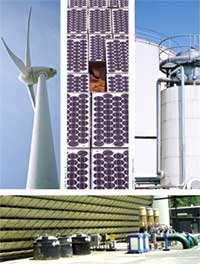Advancing sustainable development in Africa
<p>The report provides a detailed analysis of the design and implementation of Science, Technology, and Innovation (STI) roadmaps aimed at advancing the Sustainable Development Goals (SDGs) in Sub-Saharan
<p>The report provides a detailed analysis of the design and implementation of Science, Technology, and Innovation (STI) roadmaps aimed at advancing the Sustainable Development Goals (SDGs) in Sub-Saharan

American industry tries to power its way into the Indian renewable energy market
THE ministry of non-conventional energy sources (MNES) is giving the rich city dweller in the country an optional source of electricity: rooftop photovoltaic cell units which convert sun rays into
IN TOO pat a manner, some critics have already seen in us secretary of energy Hazel O'Leary's wide-ranging talks with her counterpart Indian ministers, evidence of a forced transfer of exorbitant
AN INDICATOR of a society's level of development is the quantity and quality of the energy it consumes. This is made clear by the wide disparity in per capita energy consumption in industrialised and

Rajasthan s so called solar power project
The US is trying to revive solar thermal power technology
A recent development in solar energy is a solar tower/chimney.It is a method used for large-scale generation of electricity from solar radiation.The principle is very simple.It is based on the well kn

The International Conference for Renewable Energies is to be held in Bonn, Germany. But here is a sector dwarfed by fossil fuels, and although governments can proactively root for renewables, and some have, the options given to developing countries are qu
This paper examines the financial and economic feasibility of adoption of an energy-conserving technology in the household sector in Sri Lanka. Results shows that the adoption of this energy-conserving technology is financially profitable and economically viable. Systematic incorporation of environmental benefits further strengthens the case for energy conservation.

biological sciences Water bears in space Life for a certain kind of tiny invertebrates is possible in space. About 1.5 mm long water bears were found to survive there, a European Space Agency (esa) experiment showed. This makes the eight-legged invertebrates, also called tardigrade, the first animals known to survive the harsh combination of low pressure and intense radiation.